FREE-TO-ATTEND TECHNOLOGY PRESENTATION STAGE
Hall 8 Wednesday, June 5, Hall 8 - morning session
Intelligent labs – the future of development
 Steve Whelan
Steve WhelanProgram director
Horiba Mira
UK
The presentation will introduce the topic of development automation using new digital engineering methodologies of simulation, X-in-the-loop, digital twinning and bringing the real world into the lab. Horiba Intelligent Lab (HIL) is a package of solutions that enables more rapid and accurate development of propulsion systems for real-world efficiency, performance, emissions and range. By use of road-to-rig, XIL and digital twin methods, HIL eliminates much of the physical testing used in the development and validation of powertrain calibration. HIL delivers a reduction in development time and costs while providing a more robust and comprehensive validation of real-world attributes.
What the audience will learn
- The challenges of Euro 7 and real-world attribute development
- An approach for replicating real-world testing in the lab, eliminating the need for expensive climatic road tests
- An approach using digital engineering linking empirically generated digital twins to whole vehicle simulation to achieve high-accuracy predictions
- Use of co-simulated digital twins to undertake
- The potential of digital twins to enable accurate and rapid auto optimization
Non-contact torque sensors with innovative compensation of environmental effects of speed, temperature and parasitic forces
 Dr Ernst Manner
Dr Ernst MannerDirector
MANNER Sensortelemetrie
Germany
This presentation introduces the latest developments from Manner in the field of non-contact torque sensors, offering innovative compensation possibilities within the rotor for environmental effects such as speed, temperature, and parasitic forces. Manner measurement flanges stand out for their highest accuracy under various environmental conditions, providing a large transmission distance between the shaft and stator unit. They are insensitive to magnetic fields and effortlessly tackle challenges like shaft currents in hybrid or electric drives, as well as high speeds. The presentation sheds light on often overlooked environmental effects and presents innovative solutions for compensation, whether it be axial force effects due to helical gears or other parasitic influences.
What the audience will learn
- Innovative Compensation: Manner's non-contact torque sensors feature groundbreaking rotor compensation for environmental factors such as speed, temperature, and parasitic forces
- Exceptional Accuracy: Manner's flanges excel in accuracy, ensuring a significant transmission distance between shaft and stator units across diverse conditions
- Versatility: Flanges, immune to magnetic fields, handle challenges like shaft currents and high speeds in hybrid or electric drives efficiently
- innovative solutions for often overlooked environmental effects, including compensation for axial force effects and parasitic influences.
- innovative speed compensation for high-speed measurement flanges in hybrid and electric vehicles, ensuring enhanced accuracy in demanding applications
Charting New Routes: Innovations in Open Road Navigation for Testing
 Jonathan Deacon
Jonathan DeaconProduct Manager
OxTS
UK
Discover OxTS' groundbreaking advancements in Open Road Navigation for Automotive Testers. We'll explain how new IMU technology has reduced warm-up times and improved attitude/drift performance while removing ITAR restrictions, and then go into detail on how OxTS LiDAR odometry is boosting performance in GNSS-poor and GNSS-denied environments. Explore how these innovations, now available in real-time, redefine real-world automotive testing, offering unparalleled precision and flexibility.
What the audience will learn
- How improved IMU technology leads to better performance while avoiding export restrictions.
- What LiDAR odometry is and how it can be integrated into an INS solution.
- In what locations new technology blocks can now be deployed to generate usable data where it was previously unattainable.
Vehicle security: shifting left with HIL-based testing and penetration testing
 Ilya Dubnov
Ilya DubnovOnboard Security Research Team Lead
Argus Cyber Security
Israel
 Thomas Brandt
Thomas BrandtSenior consultant
dSpace GmbH
Germany
Vehicle penetration testing is essential to the Vehicle Type Approval regulatory requirement and is crucial in uncovering security vulnerabilities in vehicles and their systems. However, navigating the resolution process can be time-consuming, with potential business impacts such as a delay in the start-of-production date.
In this session, we will explore a strategic approach to managing this process and mitigating risks by shifting left, harnessing hardware-in-the-loop (HIL) benches for automated cyber security testing in the development stages.
We will also discuss how this proactive methodology identifies issues early and streamlines the finalization stages, ensuring your product’s security is comprehensively validated.
What the audience will learn
- Learn how HIL allows automated cybersecurity tests to be executed.
- Gain a deep understanding of the pivotal role vehicle penetration testing plays in meeting and exceeding automotive cyber security regulations.
- Acquire valuable insight into regulatory auditors’ criteria and considerations in evaluating cyber security measures.
Operation experience with hydrogen storage systems at IABG's test infrastructure
 Torsten Semper
Torsten SemperHead of business development
IABG mbH
Germany
To meet the increasing need for the qualification of hydrogen components and systems, IABG has set up new test infrastructures. Based on generic test procedures for the qualification of hydrogen storage systems, the new facilities and planned expansions are presented in detail. Based on operation experience with hydraulic tests (pressure, burst and cycling) with substitute media and high-risk tests (bonfire, impact) on large CGH2 storage systems, these are discussed in detail. Furthermore, the status of the construction of the hydrogen test facility for cryogenic hydrogen applications will be explained.
What the audience will learn
- The demand for the safeguarding of hydrogen components and systems
- Generic procedure for a hydrogen storage system qualification
- Technical equipment for the safeguarding of hydrogen storage systems at IABG
- Insight into the operation experience of hydrogen storage system qualification
Using K&C hybrid simulation to accelerate active chassis development
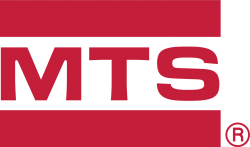 Thomas Stachel
Thomas StachelPrinicpal Staff Engineer
MTS System Corporation
USA
Meaningful evaluation of interconnected active systems used in next-generation ICE, electric, and autonomous vehicles must extend from early-stage modeling through proving ground validation, which presents numerous simulation challenges for OEMs. MTS has proven that hybrid simulation can be used to establish vehicle-level simulation environments where developers can evaluate, integrate, drive, and certify active systems well in advance of full-vehicle prototypes. This presentation introduces mHIL K&C, a hybrid simulation approach that integrates vehicle models and an active suspension module under test to enable meaningful vehicle-level evaluation of suspension performance throughout the development cycle to realize faster, more efficient active chassis development.
What the audience will learn
- Introduction to realtime hybrid simulation (mHIL)
- Integration of mHIL with a Kinematic and Compliance system for active and semi-active suspension development
- Applications using an mHIL K&C to support earlier development and evaluation without a prototype
A power test system for high voltage and high speed
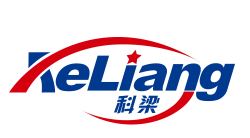 Yanbiao Sun
Yanbiao SunProduct Manager
Shanghai KeLiang Information Technology Co., Ltd.
China
A power test system for MCU is provided. The system is mainly composed of simulation module, power amplifier module and emulation control module, which can flexibly emulate different motor types and power environments.
The system has the following features:
1) PMSM, BLDCM, IM and other types of motors can be emulated accurately;
2) Flexibly set the load curve through polynomial fitting, file import, remote communication, etc.;
3) Can emulate mechanical failure, sensor failure, interphase short circuit, phase break, demagnetization, parameter drift divergence, overheating, three-phase imbalance and other fault scenarios;
4)10kHz current fundamental wave can be emulated.
What the audience will learn
- MCU test system principle.
- Compared with the traditional bench, what problems can be solved.
- The realization of motor fault simulation.
Accurately testing 4D imaging radars with CATR technology
 Asish Jain
Asish JainSolution planner
Keysight Technologies
Germany
A combination of high-performance processing units, advanced and cascaded millimeter-wave transceivers and MIMO antenna array enable 4D imaging radars. The MIMO antenna array makes the antenna aperture larger and, therefore, demands a larger far field distance for testing in both design verification and manufacturing stages. This brings the challenge of having a test range that large in your lab or production line. This paper will explain a smaller footprint and more accurate CATR technology. It will also share insightful test results showing CATR technology's impact on developing high-quality 4D imaging radars.
What the audience will learn
- The challenges of testing 4D imaging radars
- How can compact antenna test range technology solve these challenges and improve next-generation radar design?
- Insights on CATR technology with real measurement results and its comparison with the traditional approach
FDS – Fatigue damage spectrum – the real magnitude
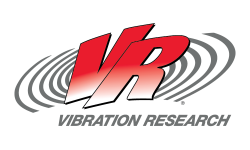 Peter-Johann Sikora
Peter-Johann SikoraHead of training and accreditation
Vibration Research Europe GmbH
Germany
With the market becoming more and more globalized and competitive, the importance of faster product development has forced the industry to find new ways to make product validation more efficient and less expensive. The biggest reform was the prediction of the mechanical endurance of components under the strain of vibration. This presentation provides an overview of the way to accelerate durability bench tests, to compare the severity of different vibration specifications. The method is FDS Test Tailoring.
What the audience will learn
- FDS – Test Tailoring for fatigue damage spectrum
- The goal: the same fatigue damage content of the original series, but in a reduced amount of time
- The tailored test method allows adaptation of the accelerated FDS profile to the needs and reliability targets
- Mission profile – reduction, severity, derivation
Hall 8 Wednesday, June 5, Hall 8 - afternoon session
Leveraging AI and Cloud Services for Measurement Data
 Waqas Ahmad
Waqas AhmadHead of InSynx | Process & Project Management
Müller-BBM VibroAkustik Systeme GmbH
Germany
In the era of data-driven decision-making, leveraging Artificial Intelligence (AI) and Cloud Services has become instrumental in unlocking the full potential of measurement data. In this talk, we show how organizations can harness AI algorithms and cloud processing to extract valuable insights from vast volumes of measurement data. From enhancing analysis efficiency to enabling trend and predictive analytics or real-time monitoring, join us as we explore the transformative capabilities of AI and Cloud Services in revolutionizing measurement data analysis and driving innovation across engineering and testing.
What the audience will learn
- How to easily utilize standard solutions for customized analysis processes
- How to speed up measurement data evaluation through automated validation
- How to gain faster accessibility of measurement data
openDAQ - Unlimited data access via one Software Development Kit
 Nils Röttger
Nils RöttgerCTO
Blueberry d.o.o
Slovenia
Over the past two years, the openDAQ Software Development Kit (SDK) has undergone substantial advancement, evolving from concept to actualization. openDAQ release 3.0.0 signifies the culmination of this development effort, with all key features fully developed and refined. This enables seamless integration for test and measurement products into a solution via its unified Application Programming Interface (API) for discovery, streaming, and configuration. Notably, openDAQ embraces well-accepted industry standards for achieving this. This advancement is poised to significantly streamline our professional life. How it works, who is already engaged, and how you can get engaged are explained in this presentation.
What the audience will learn
- What is the openDAQ Software Development Kit.
- How does the openDAQ SDK enable the Test and Measurement market to speak one Application Programming Interface.
- Which standards are supported by the openDAQ Software Development Kit.
- Which devices talk openDAQ right now.
- How you can engage to openDAQ initiative, e.g. via open source contribution / working groups or joining as a memeber.
Digital twin for pre-silicon test & development environment for SDV
 Conhas Thakkar
Conhas ThakkarSolution Architect
Siemens AG
Germany
Siemens EDA, PAVE360 digital twin solution offers an open pre-silicon development and test environment. A shift left is required, where hardware and software are developed in parallel. PAVE360 allows customers to move from restrictive linear design flows to iterative, multidimensional flows with testing activities performed as part of continuous integration and validation of sub-systems.
By creating a virtual replica of the autonomous vehicle and its environment, the digital twin enables architectural exploration and software development followed by testing, validation, and optimization, all pre-silicon. In this presentation, we will explore the capabilities of such a solution in ADAS and IVI.
What the audience will learn
- Shift left of Software development
- Multi-user cloud deployment
- Cost effective bug revelations
- Fault injection and corner case testing without the need to damage hardware
Shape the future of In-vehicle AI Robotic Testing
 Chris Shieh
Chris ShiehCTO
Allion Labs, Inc.
Taiwan
This presentation examines the transformative potential of In-Vehicle AI Robotic Testing in automotive innovation. We delve into the challenges confronting today's e-cockpit validation, emphasizing the critical need for enhanced testing methodologies. Through AI robotic innovation, we explore how the simulation of human-machine interaction revolutionizes testing protocols, enabling rigorous validation of software-defined vehicles. We outline the myriad applications of AI robotic testing across the automotive ecosystem and highlight best practices for seamless adoption, implementation, and deployment. Join us to discover how In-Vehicle AI Robotic Testing pioneers a new era of safety, reliability, and efficiency in automotive technology.
What the audience will learn
- Challenges faced by automotive ecosystem in today's e-cockpit validation.
- AI robotic innovation makes the simulation of human machine interaction possible.
- Potential applications of AI robotic testing in software defined vehicle.
- Best practices for AI robotic testing adoption, implementation and deployment.
Hardware-in-the-Loop (HIL): The Key Factor in BMS Design Verification
 Paul Bovingdon
Paul BovingdonTechnical Engineering Manager
Pickering Interfaces
UK
Battery Management System (BMS) design is essential for achieving optimal performance and user safety. In order to accurately simulate the real-world environment in which BMS will be used, HIL testing can provide an efficient way to assess the system's capabilities and rectify any potential faults. Learn how HIL testing can create a virtual twin of the system, allowing for safe and accurate tests to be conducted in a controlled environment. This physical representation can then be used to identify and mitigate potential risks before launching the BMS into production.
What the audience will learn
- Model-based design
- The advantages of HIL in BMS testing
- How your contemporaries are utilizing HIL specifically
- How HIL can be used to validate/verify your BMS
- Why using industry-standard platforms is the best solution
SEEL - The New Test Center for Electromobility
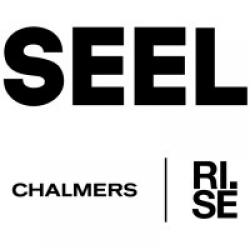 Dr Martin Gustavsson
Dr Martin GustavssonResearch Director
SEEL Swedish Electric Transport Laboratory
Sweden
SEEL Swedish Electric Transport Laboratory is a test center for research and development of electromobility. The aim of SEEL is to improve efficient knowledge development and cooperation to accelerate the evolution of electrified transports. SEEL will also contribute to the establishment of a sustainable and competitive battery value chain in Sweden and Europe.
The automotive, aerospace, and maritime sectors, together with developers of relevant technology, will gain the possibility to test prototypes and products at independent test facilities with state-of-the-art equipment.
What the audience will learn
- Battery testing
- Charging function testing
- Electric Machine testing
- Complete Vehicle testing
Hall 10 Wednesday, June 5, Hall 10 - morning session
Pioneering Virtual Calibration for EV Powertrain: AI’s Role in Performance
 Gary Brotman
Gary BrotmanChief Executive Officer
Secondmind
UK
The automotive industry's trend towards virtualization for more efficient, cost-effective, and flexible development cycles requires the adoption of new AI approaches that enable virtual calibration. Secondmind is at the forefront of this trend, offering advanced active machine learning that can enable virtualization to enhance calibration sustainability and efficiency. Drawing on real-world challenges in EV powertrain calibration, this talk will demonstrate how prioritizing virtual models over physical prototypes not only radically speeds up development cycles but also meets the industry’s innovation and environmental goals.
What the audience will learn
- Understanding why the shift towards virtual calibration in automotive development is critical for future sustainable development
- How AI, specifically active machine learning, is enhancing calibration precision, vehicle performance, and efficiency through end-to-end exploration of multi-dimensional spaces
- How virtual calibration accelerates EV powertrain development and innovation
- Strategies for integrating advanced machine learning into the early-stage vehicle design process.
- Insights into future trends in automotive technology development, focusing on AI’s impact on design and development processes
ADAS Testing Revolution: Simulating Scenarios from Ground Truth
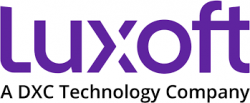 Heiko Ruth
Heiko RuthTechnical Director
Luxoft GmbH
Germany
MicroVision and Luxoft introduce an advanced tool that creates precise Ground Truth (GT) from LIDAR and camera data for real-world traffic scenarios, incorporating metadata like curve radii and driving scenarios crucial for testing ADAS systems. A significant advantage of this approach is the ability to generate simulated scenarios from GT, instantly creating complex traffic conditions or weather changes with just one click. This feature allows OEMs and Tier1 suppliers to efficiently simulate specific test scenarios. This method significantly reduces development time and costs, facilitating rapid creation of critical test scenarios, thereby enhancing the and reliability of autonomous driving systems.
What the audience will learn
- Understanding the importance of accurate Ground Truth data in ADAS testing.
- Learning how to efficiently generate simulated scenarios from Ground Truth data.
- Exploring cost-saving benefits through simulation of complex driving conditions.
- Gaining insights into enhancing the safety and reliability of autonomous driving systems.
- Discovering innovative approaches to test and validate ADAS under diverse conditions.
Advanced machine mapping with result verification and MU calculation
 Klaus Lang
Klaus LangHead of business development EMEA
HBK GmbH
Germany
Machine mapping is an essential portion of the development and calibration of electric drives. Getting reliable data at stable setpoints is key for accurate and repeatable power and efficiency results. All results need to be interpreted in the light of the underlying measurement uncertainty, which varies by nature from setpoint to setpoint. This is a real challenge and a time-consuming task for electric drive test engineers. The presented power analysis solution not only calculates all the electrical and mechanical power and efficiencies but also delivers – in real time – information about the stability and the achieved measurement uncertainty for each individual setpoint.
What the audience will learn
- How to do electric machine and drive maps faster
- How to obtain information if a mapping setpoint is stable and the results are valid
- How to obtain the measurement uncertainty for each setpoint automatically
- How to integrate between a modern power anaylzer and an automation system
Beyond Measurement Technology: Solutions for Testing Electric Vehicles and Components
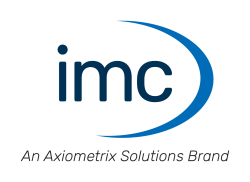 Christian Walther
Christian WaltherBusiness Development
imc Test and Measurement GmbH - An Axiometrix Solutions Brand
Germany
As the automotive industry accelerates towards electrification, precision measurement in the electric vehicle (EV) powertrain has become more critical. Join us for a presentation that delves deep into the realm of EV powertrain measurements, providing insights and solutions that are essential for test and measurement engineers in the automotive industry. We will explore the unique challenges posed by the electrification of the powertrain and how cutting-edge measurement technology is rising to meet these challenges. Our comprehensive agenda covers a wide range of topics, ensuring you gain valuable knowledge and actionable solutions.
What the audience will learn
- Powering Up: Measuring EV Battery Systems. Learn about power measurement during the charging of battery systems, including WLTP measurements.
- Efficiency Matters: Explore the battle between mechanical and electrical power and understand how measuring efficiency can optimize EV performance.
- Turn-key test-bench solution for traction motors: Back-to-back test stand; temperature measurements in rotors of electric motors; rotor-position sensor test
- Traction in Focus: In-depth look at measuring wheel forces on EVs, a crucial aspect of their energy balance and efficiency.
Transition from Domain to Zonal Network Architecture for SDV
 Felix Ottofuelling
Felix OttofuellingBusiness Development Manager EU
Intrepid Control Systems
Germany
The Automotive Industry is undergoing a huge transformation ranging from electrification to autonomous driving. The new power train and autonomous functions are impacting the in-vehicle network architecture. Automotive Ethernet is fundamental to these changes to provide much higher bandwidth for data communication. The classical domain architecture is substituted by zonal architectures with zonal ECU controllers to aggregate compute power and intelligence in fewer ECUs in a central approach. In this transition, the integration of legacy networks gives huge challenges in power management and wake / sleep architecture. Learn how the Zonal architecture is the enabler to build the software-defined vehicle.
What the audience will learn
- Limitations of the Domain Architecture
- Reasons and advantages of the Zonal Architecture
- Shift of computing architecture to central high-performance ECU and zonal ECUs
- Enabling Technology Automotive Ethernet, IEEE protocols, Open Alliance, Autosar
- How to integrate legacy networks, wake/sleep power management,
An efficient solution for decoupling test automation process from PLM
 Manuel Zabelt
Manuel ZabeltProduct Owner
tracetronic GmbH
Germany
Product Lifecycle Management (PLM) solutions ensure that software quality of new driving functions can be assessed reliably. Trying to address all aspects of testing and test automation (test cases, test benches, test execution, pipelines) within PLM solutions leads to huge challenges. How can these challenges be addressed effectively?
We show that decoupling test automation and PLM processes can be the key to success. An independent test automation platform can not only execute highly complex test setups automatically, but also provide fast, valid input to PLM systems. With the right solutions in place, all experts can focus on their specific tasks.
What the audience will learn
- Getting a clear picture of current product quality is complex (requirements, components, releases, variants, test cases, test results).
- It gets even more complicated when you mix in
- Our Approach: Only things that actually help determine quality should end up in Product Lifecycle Management.
- Effective test management tooling in the context of product lifecycle management in heterogeneous test setups from manual testing to CI
Italdesign: A Flexible Design Approach to Embedded Systems SW Testing
 Claudio Sala
Claudio SalaHead of EE Validation & Testing
ITALDESIGN
Italy
Italdesign has a strong background in vehicle engineering, including electronics integration. This comprehensive and thorough understanding on single components and on their interaction was fundamental to approach SW testing, focusing not only on DUTs, but also on the systems they belong to. At Italdesign, the design approach starts from system requirements and test cases, to define all the toolchain aspects from HW to SW, by technology benchmarking, keeping into account scalability, easy switch among market variants/platforms and interaction with signals from multiple domains (audio/video, radio, GPS, mobiles, analog, digital). Some use cases from Italdesign’s portfolio will be showcased.
What the audience will learn
- Toolchain design against DUT system requirements and test cases
- Scalability and coverage of multiple market variants and vehicle platforms
- Suppliers benchmarking based on requirements and functional domains
MANAGING THE TRANSITION INTO A NEW ERA OF CONNECTIVITY
 Wolfgang Horrig
Wolfgang HorrigGlobal Sales Manager
EA Elektro-Automatik
Germany
How hyperconnected energy and data technology will affect the Test & Measurement industry
The world’s electrification and data technology shape how multiple industries blend together for new, sustainable mobility solutions. The Automotive industry no longer relies on one energy source or supply chain. Instead, it must meet the challenge of a massive new energy storage and distribution ecosystem while accounting for more kinds of electric vehicles than ever. In addition, a new era of connectivity is rising, and so is the need for a broader knowledge of testing procedures and modern test equipment to meet the two newest challenges.
What the audience will learn
- Why connectivity will be the new trend in e-mobility
- Which mobility solutions are on the rise
- What's becoming important in the test and measurement industry
Modernizing Control Software Testing of Electric Powertrain Components
 Dr Dusan Majstorovic
Dr Dusan MajstorovicChief Technology Officer
Typhoon HIL
USA
This presentation will talk about the change in testing requirements that the transportation electrification brings along with it. The transition from a hardware defined vehicle to a software defined one is taking place. Instead of internal combustion engines, which lose performance over time, the modern electric vehicle is based on agile development and continues to improve performance and functionality during the operational product maintenance. Increased and improved HIL Testing of these components spans beyond the safety criticality standards and drives opportunity to streamline improvements and enable a safe and ever improving over-the-air update-based vehicle.
What the audience will learn
- Standardizing the tools for all powertrain component control software
- Improving efficiency of software teams by increasing collaboration
- Ease of use with a HIL Platform supporting testing of e-Drives/e-Axles, On-Board Chargers, and BMS systems individually and their integration
Hall 10 Wednesday, June 5, Hall 10 - afternoon session
ITECH Test Solution for EV Electronics
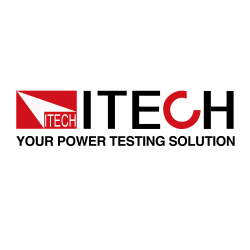 Christian Korreng
Christian KorrengProduct Manager
ITECH ELECTRONIC CO.,LTD.
Germany
Join us as we delve into essential EV testing strategies. In part one, we'll explore grid adaptability testing for EV inverters. Part two focuses on EV battery simulation and testing. Finally, we'll uncover seven key examples of utilizing ITECH instruments for EV electronics testing. Through these insights, we aim to enhance EV efficiency, safety, and reliability, driving forward the future of sustainable transportation.
What the audience will learn
- Grid Adaptability Test
- Battery Test and Simulation
- Typical Cases
Reduce energy usage by +35% using hybrid HPU technology
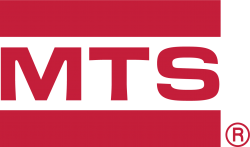 James Hennen
James HennenSenior Business Development Manager
MTS Systems
USA
The need to maximize energy efficiency and comply with regional and global decarbonization mandates poses daunting challenges for test laboratory managers. In response, MTS has engineered a new, hybrid approach to hydraulic power generation that employs state-of-the-art digital displacement (radial flow) technology to modulate flow during typical demand, while engaging conventional swash plate (axial flow) technology to achieve maximum efficiency during peak use. This presentation examines the benefits of this new hybrid power generation technology, presents data that demonstrates its effectiveness, and explores the numerous ways it will be integrated throughout existing test laboratory infrastructure to dramatically reduce energy usage.
What the audience will learn
- The audience will gain a technical understanding of an innovative hybrid approach to hydraulic power generation.
- The audience will learn the benefits the hybrid HPU technology and see the data supporting energy efficiency claims.
- The audience will learn how the hybrid HPU technology can be integrated into existing test laboratory infrastructure.
A Toolbox for efficient EV-range development and certification
 Dr Björn Ebel
Dr Björn EbelHead of System Line Management
AVL Zöllner GmbH
Germany
BEV-testing with focus on range-development and certification requires a charging and discharging solution with high accuracy in order to comply with legislative requirements. AVL Charger is a product, that is streamlined to charging and discharging of battery electric vehicles with a focus on compliance and efficiency realized by its integration into AVL's automation system. Thanks to its modular design, it is scalable to the actual customer need supporting the customer workflows in the best possible way.
What the audience will learn
- Legislative charging/discharging requirements
- Overview on AVL Charger
- Optimized BEV-range-certification workflows with AVL Charger
In-Vehicle Network Security
 Ionel Ghita
Ionel GhitaTechnology Specialist
Keysight
Romania
 Marty Gubow
Marty GubowTSN program manager
Keysight
USA
How is inside your Vehicle Network? Can you prove is Secured ?
Sections:
- L2 Encryption - MACsec
Interoperability validation
Performance measurements
Negative testing and Robustness
- Gateway testing
Protocol Fuzzing
Malware Injection
Denials of Service mitigation
The presentation is focused on practical ways to test and measure Security component's efficiency and performance for In Vehicle Network applications. Several customer case-studies will higlight the benefits of system testing versus individual "in-isolation" testing of components.
What the audience will learn
- L2 Encryption - MACsec
- Gateway security testing
ADwin-Gold-III for End-of-line testing, HIL and Teststand automation with Simulink/ADbasic/ADwin-C
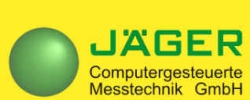 Heinz Beimert
Heinz BeimertInternational Sales and Consultant Manager
Jaeger Computergesteuerte Messtechnik GmbH
Germany
The ADwin-Gold-III completes the ADwin product family, providing real-time solutions for end-of-line testing, hardware-in-the-loop applications, test bench automation, and data acquisition with online analysis. The ADwin system's core is a local deterministic real-time CPU with nanoseconds of jitter to trigger events. It is suitable for applications ranging from kHz to MHz. ADwin devices are available in standard or customizable OEM versions, offering a variety of analog and digital signal types as well as interfaces such as CAN, SENT, LIN, PROFINET, EtherCat, and RT-Ethernet-UDP. The ADwin system integration and project team builds custom solutions, using tools such as ADbasic/ADwin-C or Simulink.
What the audience will learn
- Built Hardware-in-the-Loop applications with ADwin-Gold-III and Simulink, or using ADwin-C/ADbasic in combination with dotNet, Python, Matlab, LabView® or other tools.
- Examples of multi-axis controls and feedback analysis in test stands with ADwin and with a high timing precision in real-time.
- Use a RT-Ethernet based UDP to communicate between test bench devices and ADwin systems in deterministic real-time.
- End-of-line tests in production for CAN, SENT and LIN devices. Results are stored in a traceable production line databases.
Advance controller development with a pragmatic digital approach
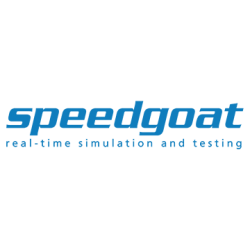 Dr Mathieu Lu-Dac
Dr Mathieu Lu-DacApplication engineer
Speedgoat GmbH
Switzerland
As the world advances in electric mobility, sustainable energy, autonomous technologies and medical devices, engineering firms face the challenge of innovating and testing new control designs. Digital twin simulation and model-based engineering are increasingly used to develop and test embedded control systems efficiently. However, gaps in workflow hinder the seamless transition from design to validation. The presentation introduces a fully connected model-based engineering workflow that integrates requirements, tests and models into a single digital thread, facilitating a smooth transition across development stages, from architecture to real-time verification, rapid prototyping, code deployment and hardware-in-the-loop testing.
What the audience will learn
- Accelerated development and testing of embedded control systems through digital twin simulation and model-based engineering
- Improved efficiency in prototyping, code deployment and testing with end-to-end automation and real-time testing
- Streamlined transition from requirements to design and validation, minimizing workflow gaps and promoting artifact reuse
